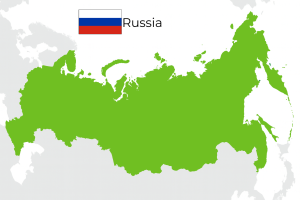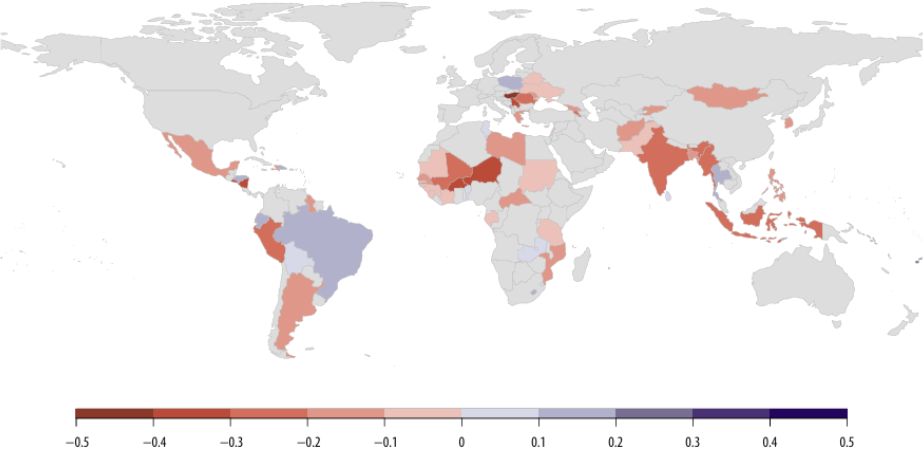9.1 Free and Fair Elections
Elections are a cornerstone of democracy, but not all elections are conducted in a manner that is fair or transparent. Some leaders might try to manipulate the electoral process to stay in office. According to Daoust & Nadeau (2023), “every election represents both a test for democracy and a potential threat to its regime support” (pg 1), so holding open elections can pose an existential threat to an aspiring autocrat’s power. When we encounter news reports about elections around the world, it can be difficult to discern whether an election was actually a fair contest. It may be helpful to examine different methods of assessing whether an election was truly democratic.
Defining Democracies
 The most basic way of identifying a democratic election is to look for evidence of voters casting ballots to elect leaders. This is a procedural approach to defining a democracy: if democratic procedures are present, such as elections, then the country must be a democracy. This approach might be overly simplistic, given the fact that some countries, such as Russia, conduct elections where candidate participation is limited and the outcome is predetermined.
The most basic way of identifying a democratic election is to look for evidence of voters casting ballots to elect leaders. This is a procedural approach to defining a democracy: if democratic procedures are present, such as elections, then the country must be a democracy. This approach might be overly simplistic, given the fact that some countries, such as Russia, conduct elections where candidate participation is limited and the outcome is predetermined.
To better identify democratic countries, a substantive approach to measuring democracy is more helpful. This involves examining the substance or quality of the electoral regime: are political parties legal? Do candidates face barriers to competing in the election? Can all citizens vote? Those are the types of questions to consider when assessing democratic elections.
Ranking Democracies
Several think tanks, news agencies, and non-governmental organizations (NGO) study elections around the world to derive a substantive ranking of democratic institutions. For instance, the V-Dem project conducts annual reporting on the state of democracy worldwide.
The project aims to categorize regimes based on 24 indicators that encompass the structure of government, legal regime, and electoral process. Countries can be grouped into several broad categories based on the nature of democratic participation.
| Closed Autocracy | Electoral Autocracy | Electoral Democracy | Liberal Democracy |
|---|---|---|---|
| No elections.
Party competition is prohibited, and citizens do not have democratic rights. |
Elections are conducted, but the government may restrict the participation of parties and voters. The ruling party may win every time | Free and fair elections with multiparty competition and mass suffrage. | Electoral democracies with robust legal protections, constraints on government power, and equality before the law |
It should be noted that these categories are not exhaustive. There are multiple terms that can be used to categorize different types of regimes. For instance, the term facade democracy is sometimes used to describe a regime that has the trappings of democracy, such as elections and party competition, but in reality it functions like a one-party authoritarian state.
Close-up: Russia’s Facade Democracy

- V-Dem Regime Type: Electoral Autocracy
- Transparency International Corruption Rank: 154\190
- Economist Democracy Score & Category: 2:03 /10 – Authoritarian
- Freedom in the World Score: 12/100
Russia is a good example of a facade democracy. It began to liberalize in the 1990s, adopting more liberal economic policies and allowing elections. The elections, however, were only symbolic. The Russian government, controlled by Vladimir Putin, used corruption, intimidation, and violence against political opponents to maintain its rule (Lynch, 2021). Additionally, the Russian regime prohibits competitive candidates from registering, and it ensures victory for Putin by manipulating the counting process (Freedom House, 2024).
Fair Elections
Another organization that evaluates electoral fairness is the Electoral Integrity Project (EIP). The EIP evaluates electoral processes and institutions according to several criteria:
- Contestation – Can the candidates and parties compete on a level playing field?
- Participation – Is everyone able to vote?
- Deliberation – Are the choices meaningful? Do voters have access to unbiased information?
- Adjudication – Is the electoral process fair? Are the rules followed?
(Garnett et al. 2024).
 Other indicators can be used to measure and compare democracies: Satisfaction With Democracy (SWD) is a survey-based measure used to gauge citizens’ perceptions of the effectiveness of a country’s democratic institutions (Daoust & Nadeau, 2023). The Economist Intelligence Unit (EIU) also publishes an annual Democracy Index to compare democratic processes across regimes. Norway and New Zealand topped the 2024 rankings, with each country earning a perfect score of 10.00 for electoral process and pluralism (Economist Intelligence Unit, 2025). The NGO Freedom House compiles several measures of civil and political liberties into an annual Freedom in the World Index. Each method uses a different set of measures to compare aspects of democracy, and the 2024 indicators seemed to show evidence of a decline.
Other indicators can be used to measure and compare democracies: Satisfaction With Democracy (SWD) is a survey-based measure used to gauge citizens’ perceptions of the effectiveness of a country’s democratic institutions (Daoust & Nadeau, 2023). The Economist Intelligence Unit (EIU) also publishes an annual Democracy Index to compare democratic processes across regimes. Norway and New Zealand topped the 2024 rankings, with each country earning a perfect score of 10.00 for electoral process and pluralism (Economist Intelligence Unit, 2025). The NGO Freedom House compiles several measures of civil and political liberties into an annual Freedom in the World Index. Each method uses a different set of measures to compare aspects of democracy, and the 2024 indicators seemed to show evidence of a decline.
Democratic Backsliding?
2024 was a landmark year for elections around the world, with over 1.6 billion ballots being cast across 74 countries (International IDEA, 2025). Rather than being a cause for optimism, the year of the election seemed to signal a period of democratic backsliding where countries became less democratic (Harrison, 2025). This was evident in the Economist Intelligence Unit’s rankings, which revealed an average score of 5.17 – the lowest average recorded since its inception in 2006 (Economist Intelligence Unit, 2025).
Some researchers have tested the electoral backsliding hypothesis and did not find evidence of a general trend, but rather a divergence with some democracies strengthening and others weakening (Garnett & James, 2023). On the map below from V-Dem, the 19 countries in blue are strengthening their democratic institutions, called democratizing, and the 45 countries in red are becoming more autocratic, or autocratizing.
Map of Countries Democratizing vs. Autocratizing

Image Description
World map titled “Map of Countries Democratizing vs. Autocratizing,” colour-coded to show the direction and degree of political regime changes. Countries are shaded along a gradient from dark red (strongly autocratizing, −0.5) to dark blue/purple (strongly democratizing, +0.5), with neutral changes shown in white (0).
Key observations:
- Countries like Venezuela, Turkey, India, and Myanmar are shown in shades of red, indicating autocratization.
- Countries like Ukraine, Chile, and parts of Sub-Saharan Africa are shaded in blue or purple, indicating democratization.
- Many countries in Western Europe, North America, and parts of Africa and Asia are left in light gray, suggesting little to no change.
A colour bar at the bottom displays the scale from −0.5 (autocratizing) to +0.5 (democratizing).
The Electoral Integrity project observed similar results with some sub-Saharan African countries having peaceful transfer of power, while other countries saw their elections plagued with violence and irregularities (Garnett et al., 2025). This apparent erosion of democracy has highlighted the importance of electoral integrity.

